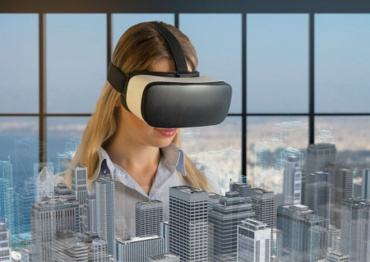
Posted on 06/14/2022
Possessing a real power of fascination, the image is today the heart of digital art. This natural evolution of contemporary art envelops the visitor to immerse him in a new world, an experience that is at once auditory, visual, olfactory or tactile.
This virtual technology is currently more and more present in the real estate sector, an innovative solution that allows to visit any property virtually anywhere and at any time.
How is immersive art used in the real estate sector?
3D tours:
Established a few years ago, the 3D tour is similar to a classic promotional video. The difference is that it is obviously entirely virtual. However, it can also take the form of a 360 degree video, which is considered a type of virtual reality.
Virtual staging:
It is often said that an empty property is not always easy to sell, clients have a hard time projecting themselves and often wonder what the property will look like when it is furnished. A virtual staging allows them to imagine themselves in the place with different furnishing styles. By offering a global view of the property, clients can see what the place will look like before they buy it. This way, they can be sure that the property fits their needs before they sign anything!
The Metaverse:
The Metaverse started out by designing games, environments and experiences based in new worlds. However, in recent years, it has evolved into much more than just a virtual reality game: it is becoming a platform for communication and commerce. While many investors are still looking at the potential of blockchain and crypto-currencies, others are beginning to explore the real estate opportunities offered by the Metaverse allowing investors to engage in digital worlds that should be as big as the physical world.
Architectural visualization:
The real estate industry has come a long way, with new technologies such as virtual reality and augmented reality making it easier to sell properties that are under construction or not yet built. Agents can create life-size virtual models to showcase properties that are not yet built, giving potential buyers the opportunity to thoroughly check out the interior and exterior of any property to be built.
Immersive art technology and the Metaverse can revolutionize the real estate industry. For both professionals and clients, it saves valuable time. In addition, virtual reality improves the customer experience and adds interactive complements to virtual tours. These include mortgage calculators, neighborhood descriptions and other important property information.
So are you ready to make the switch to virtual real estate?




